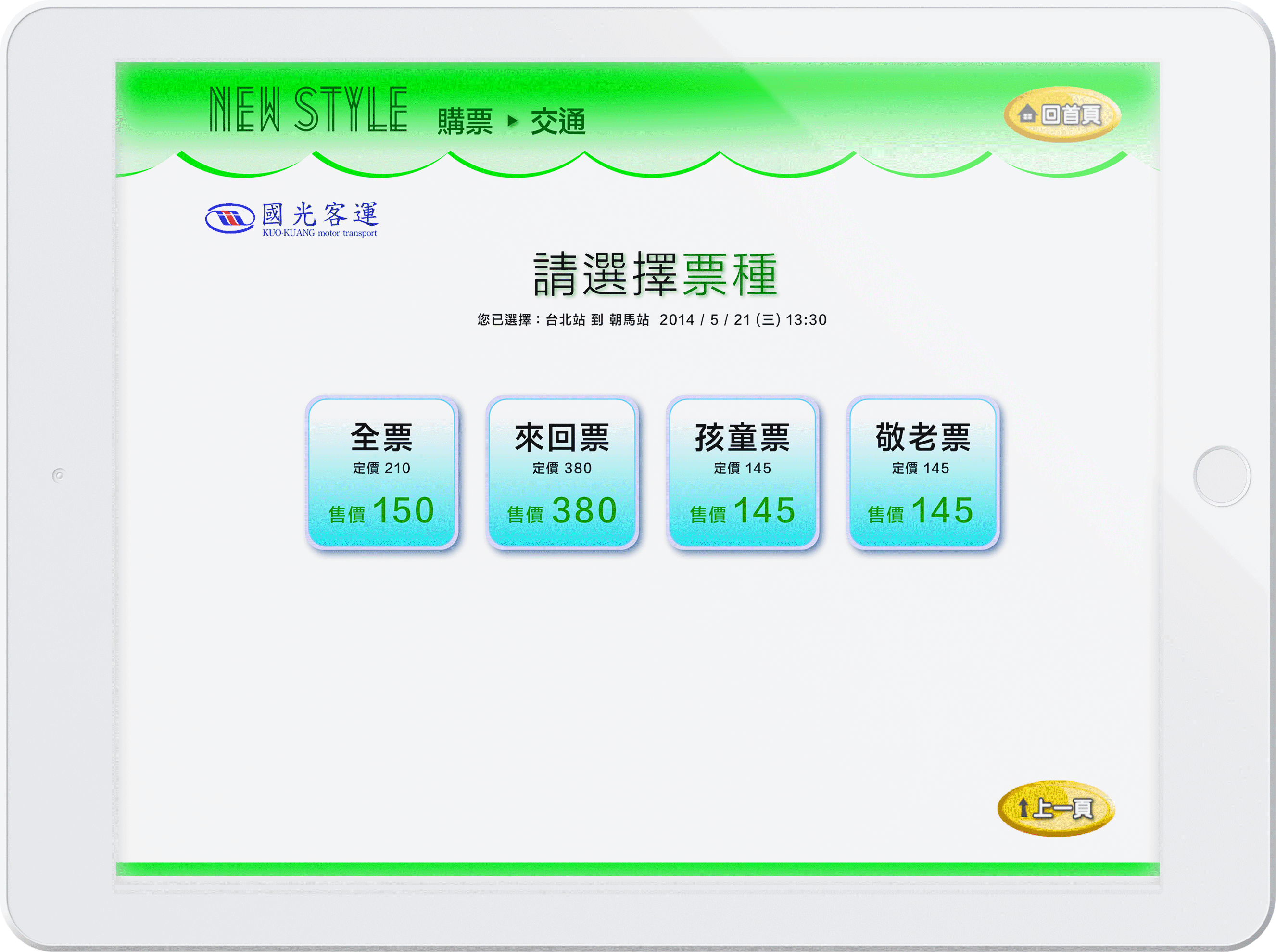Kiosk Interfaces Research
To understand the factors that influence how elderly people use interactive kiosks

CLIENT
Graduation thesis
MY ROLE
User Research
UX Design
UI Design
Prototyping
SUMMARY
This paper presents a better interface for older users, which can be used as a reference for the future .
UX Research

PROBLEM STATEMENT
As time goes by, the bond between consumers’ lives and the internet becomes tighter than ever. With the ongoing competition between companies, the scope of services expands from virtual stores to digital services.
The interactive kiosks inside convenience stores represent the digital services of this category; however, research regarding the service interface for elderly users is scarce.
Project Goals
The main goal of this research is to understand the influencing factors on interactive kiosks toward elderly users and to analyze and investigate current systems. This research uses focus group methods and experimental studies to analyze interface usability of kiosks , and to find out the variables affecting elderly users.
1
This investigation is to understand the operating obstacles and trouble points in elderly people’s use of multimedia information stations.
2
The research method is used to discover the factors that affect elderly people's operation of multimedia information stations. The results can be used as a reference for the future design of related interfaces and the planning of operation procedures.

Research Methods
Focus group
Persona
Experimental studies
Information Architecture
Prototype testing

FOCUS GROUP METHOD
The first phase investigates domestic convenience stores, as these are where the highest proportion of media information stations are located. Therefore, 7-11 ibon and Familymart Famiport media kiosks are used as interface samples for exploring the influencing factors, because they represent the majority of multimedia information station interfaces in Taiwan.
The results are the following four main variables respectively: Button Form, which contains two kinds of 2D and 3D designs ; Interface Combination, which considers multi-step interface and one-step interfaces; Information Instruction, that includes the information button; and the Time category, which includes digital classification and text classification.




EXPERIMENTAL STUDY
The second phase is the experimental study. The four variables mentioned above were introduced into the interface of the control group and the reference group respectively by using the single-factor experimental design method. It was assumed that the interface of the control group was more usable than the interface of the reference group.
This was to further understand the influence of participants’ experience in using the internet, subjective satisfaction and mental load. The results of the experiment showed that the usability of the variables of Interface Combination, Information Instruction and Time Category in the control group were significantly better than that in the reference group.


QUESTIONNAIRE
• Focus group
• NASA-TLX
• SUS








Button Form
3D designs
2D designs
Interface Combination
multi-step interface
one-step interfaces


Information Instruction

button with information
button without information
Time category

text classification
classification
The Result and Analysis
The design principle of multimedia information station for elderly users is suggested as follows :
(1) Simplify interface tasks.
(2) Reduce the information beside the button.
(3) Visualize the table.
(4) Time category using text.
(5) Number typing should avoid using addition and subtraction symbols to type.



Learnings
This is a qualitative and quantitative study, so that I can have access to more aspects in learning. From interviews, data induction and sorting, design of effective questionnaires, data analysis and interpretation of results, each link has its own challenges!
And through the research I found that there are so many original elderly care institutions, and the elderly user reaction is not the worse, I have met a 92 grandpa his reaction faster than some of the 70 s people! It make me know more different world.
Next Project


